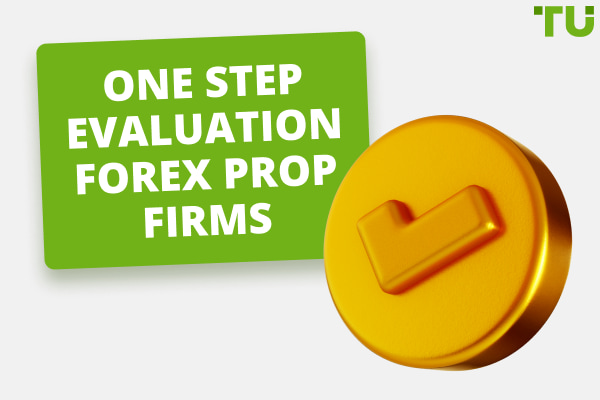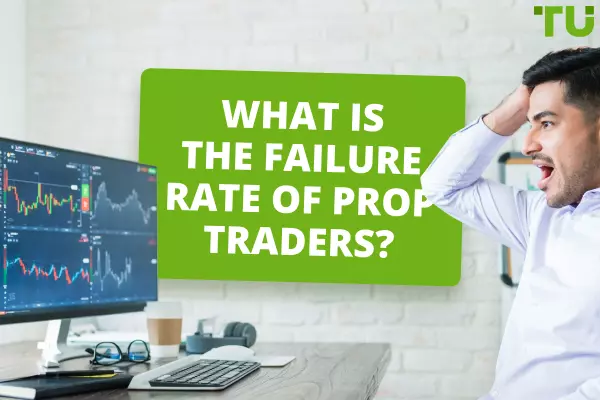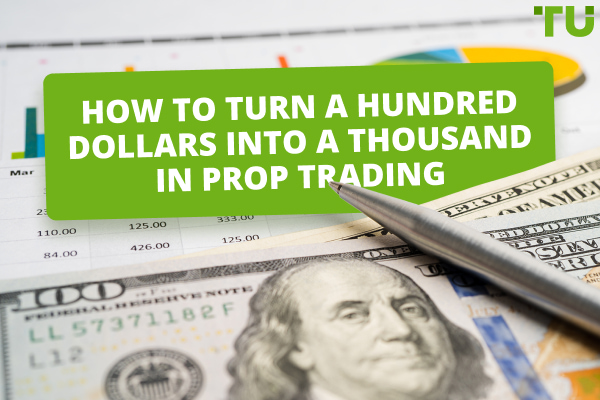The Top 4 Mistakes Prop Traders Make
The four most common mistakes made by prop traders are:
-
1
Being insufficiently prepared and trading without a clearly outlined goal and strategy
-
2
Engaging in emotional trading based on fear of missing out or greed, without prop risk management strategies
-
3
Overtrading by going for quantity of trades over quality of trades
-
4
Chasing after trends by entering into a trade when a trend is almost at its end
In the world of proprietary trading, where traders are engaging with financial markets using a prop trading firm’s capital and their performance determines their ongoing employment within the firm, minimizing mistakes is crucial. The competitiveness of the job, in a fast-paced, high-stakes environment, can amplify stress levels and lead to simple errors that could be avoided with the right approach.
Whether you’re currently a prop trader, working towards becoming one, or interested in trading in general, the most common mistakes made by prop traders are important to learn about. In this article, Traders Union looks at the four most common mistakes made by proprietary traders, how you can avoid them, and what proprietary trading firms can do to help their traders from making mistakes.
Fund your account with Topstep!What are some of the common mistakes made by prop traders?
Prop trading, short for proprietary trading, is the practice of financial firms or commercial banks engaging in trading for direct profit, rather than doing so on behalf of investor clients. To do this effectively, prop trading firms hire prop traders, who use the firm’s considerable capital to turn a profit.
A prop trader’s continued employment at the firm is heavily dependent on their trading performance, making the job an incredibly high-pressure one. Because of the stressful conditions they trade under - and for longer than average work hours - they’re prone to making mistakes.
Whether you are currently employed as a prop trader, preparing to enter a career in prop trading, or simply interested in the industry, it’s useful to know what mistakes prop traders make, and how they can be avoided.
The four most common mistakes made by prop traders are:
-
Insufficient preparation;
-
Emotional trading;
-
Overtrading;
-
Chasing trends.
Let’s take a closer look at each of these.
Lack of preparation
In the world of trading, sufficiently preparing is one of the most crucial aspects of a successful trading strategy. Without a carefully developed plan, traders would be throwing out trades into the wind, without a clearly defined blueprint for what to do in the event of unforeseen circumstances.
Prop traders who do not develop a trading plan might engage in inconsistent strategies or lack a systematic approach. They may lack a clear direction and objectives, making it challenging to navigate the markets effectively. Not backtesting their outlined strategies using historical data is also a surefire way to incur unnecessary trading difficulties. Not implementing stringent risk management techniques also leaves traders open to magnified chances of losses and makes the long-term handling of their portfolio more stressful.
To avoid making the same emotional trading mistakes, you can:
-
1
Trading Strategies. Decide on the type of trading you’ll be doing, such as day trading, swing trading, scalping, or news trading. Learn about how to implement this strategy, understanding technical and fundamental analyses appropriate to the strategy.
-
2
Backtesting. Use real historical data to backtest your chosen strategy. Experiment with different strategies and look for entry points where your strategy would have been triggered. Trace the trade opportunities to their exits, and analyze the price action between entry and exit, to see if your trade would have performed well.
-
3
Risk management. Employ as much risk management as possible – you’re using the firm’s capital after all. Set optimal stop-loss and take-profit orders. Assess your own risk-reward ratio and implement it in every trade. Diversify your portfolio to balance out profits and losses.
Emotional trading
To describe prop trading as “stressful” is an understatement. The constant pressure to perform well in multiple financial markets while in a fast-paced competitive environment inevitably causes tensions to run high. Regular traders often fall victim to emotional trading, but this can be exacerbated in a prop trading role.
Due to the increased need to continuously turn a profit to keep their job, prop traders might make impulsive trades, using emotions such as fear or greed to decide their entry and exit points, rather than using a disciplined strategy and risk management. They might engage in “revenge trading” whereby they prematurely enter a new trade to make up for an emotionally devastating and significant loss, with the hope of recouping the costs. Additionally, if the ‘fear of loss’ takes hold (which is common in trading), prop traders might make irrational and impulsive trading decisions.
To avoid making the same emotional trading mistakes, you can:
-
1
Stick to plan. Once you’ve decided on your trading strategy and applied risk management techniques to it, stick to it. Enter trades according to your plan or trade setup, and exit according to your stop-loss and take profit orders to avoid fear or greed deciding when you exit.
-
2
Take breaks. Few things lead to emotional trading like exhaustion. Take short breaks during trading sessions to avoid mental fatigue and heightened stress levels.
-
3
Stay informed. Staying up to date with market news and events and planning ahead based on that information reduces the likelihood that you will emotionally base trades on unexpected events.
-
4
Seek accountability. Share your trading plan and goals with your colleagues and superiors. Having someone to hold you accountable can help prevent emotional deviations.
Overtrading
Overtrading is the excessive buying and selling of financial assets, where a trader takes on too many trades and doesn’t give each trade enough time to develop. Prop traders, in their pursuit of exceptional performance within their trading firm, are likely to engage in overtrading. The frequent buying and selling can lead to increased transaction costs, higher levels of risk exposure, and may result in overall undesirable trading execution.
If you want to avoid making the mistake of overtrading, on top of forming comprehensive trading plans and applying emotional discipline, you can:
-
1
Set limits. Set yourself daily and weekly limits. Avoid exceeding a predetermined number of trades and stick to it in a disciplined manner.
-
2
Focus on quality. Prioritize quality trades over quantity of traders. It’s better to have a few good trades than several bad ones. Quality trades should align with your strategy and have well-defined entry and exit points.
-
3
Set long-term goals. Keep your focus on long-term goals rather than short-term gains. Overtrading is often driven by a desire for quick profits, so maintaining a broader perspective can help prevent this behavior.
-
4
Review and analyze trades. Regularly review past trades to identify patterns of overtrading. Analyzing your trading history helps you recognize triggers and adjust your behavior accordingly.
Chasing trends
Trend chasing, or “trend following”, is the behavior of entering or exiting a trade or investment as a reaction to an already occurring trend. Chasing a trend can be classed as “herd mentality” as it involves following the actions of others, typically entering a trade at a newly increased price, or selling at a low price after a large sell-off. An inexperienced prop trader may make the mistake of chasing a trend by, for example, seeing that a stock is moving in a positive direction and buying in to capitalize on its momentum, only to see trend exhausted and reverse.
There are pros and cons to trend chasing, though its efficacy depends on the point at which a trader enters. A popular expression in trading is “buy the rumor, sell the news”, which means that you should enter a trade based on early speculation, rather than when it’s already trending, and sell after it has garnered mainstream attention. Applying this idea can prevent falling prey to trend chasing. Some other tips to help you avoid overtrading:
-
1
Don’t miss opportunities. Using sufficient technical and fundamental analysis in your trading can help you to foresee upcoming trends and enter before they begin, or early into their momentum. You can use trade setups to pre-determine when to enter a trade. If you follow the market closely and decide in advance when to trade, you can avoid missing the opportunities presented by trends in the first place.
-
2
Let go of missed opportunities. If an opportunity, such as a major market reversal, is missed, accept the fact that it’s gone rather than chasing the market. Understanding that trading inherently involves risk and knowing when to move on is key.
-
3
Learn from your mistakes. Learning from missed opportunities is part of the learning process in trading. Keep a trade journal and backtest your strategy to see what you could have done differently, then try to get ahead of trends in the future.
Best Prop trading firms
How prop trading firms can help traders avoid mistakes
One of the core benefits of being a prop trader rather than an individual trader, is being part of a larger team and organization. As employers, prop trading firms can help their traders to avoid mistakes by taking several steps.
-
Provide training and education. Prop trading firms play a pivotal role in educating and training their traders. This includes imparting knowledge on market analysis, trading strategies, risk management, and the effective use of their trading platforms. Continuous education helps traders to stay ahead of market changes, enhancing their ability to adapt to evolving conditions and reducing the chances of making mistakes based on their lack of understanding.
-
Set Clear expectations and guidelines. Proprietary trading firms establish clear expectations, rules, and guidelines for their traders. This includes defining their own risk parameters, acceptable trading practices, and performance quotas. The clear guidelines prevent traders from deviating into risky trading territories and help them to align their activities with the firm’s financial objectives, fostering a cohesive trading environment.
-
Monitoring trader performance. Prop trading firms actively monitor and assess the performance of their traders. This involves analyzing their trade data, risk metrics, and how well they adhere to established guidelines. This allows trade firms to detect mistakes or deviations from strategy early on and enable timely intervention, and, in turn, provide valuable feedback to traders to facilitate their continuous learning.
Conclusion
In summary, most of the mistakes made by proprietary traders can be avoided by following the tips for each of the individual mistakes listed here. For example, formulating a comprehensive trading plan with carefully lined out risk management strategies allows a trader to be well prepared while also avoiding emotional trading. Avoiding emotional trading helps to prevent overtrading and can decrease the likelihood of trend chasing too. Try to implement all these tips and plan all aspects of your trading in advance to protect yourself against mistakes.
FAQs
What is a common mistake of traders?
A lack of education, knowledge, and preparation is the most common mistake. Many see trading as a ‘get rich quick scheme’ which leads to directionless trading and incurring heavy losses. A clearly defined strategy, continuous learning, and stringent risk management, all help to alleviate this.
What is the risk of prop trading?
Traders’ funding is unregulated, which enables trade firms to make unsubstantiated claims and embellish the reality of being a prop trader. Many aspiring prop traders lose money by paying the fee to take the prop trading challenge and not receiving funding.
How many prop traders fail?
Different sources give different answers, but generally up to 95% of prop traders fail their assessments, and 2% or less get to keep their funded account for a substantial length of time.
How to pass prop firm challenge?
Prop firm challenges are an extremely competitive and difficult means of testing a prospective prop trader’s suitability for working at a prop trading firm. They require rigorous strategizing and preparation.
Glossary for novice traders
-
1
Broker
A broker is a legal entity or individual that performs as an intermediary when making trades in the financial markets. Private investors cannot trade without a broker, since only brokers can execute trades on the exchanges.
-
2
Trading
Trading involves the act of buying and selling financial assets like stocks, currencies, or commodities with the intention of profiting from market price fluctuations. Traders employ various strategies, analysis techniques, and risk management practices to make informed decisions and optimize their chances of success in the financial markets.
-
3
Prop trading
Proprietary trading (prop trading) is a financial trading strategy where a financial firm or institution uses its own capital to trade in various financial markets, such as stocks, bonds, commodities, or derivatives, with the aim of generating profits for the company itself. Prop traders typically do not trade on behalf of clients but instead trade with the firm's money, taking on the associated risks and rewards.
-
4
Risk Management
Risk management is a risk management model that involves controlling potential losses while maximizing profits. The main risk management tools are stop loss, take profit, calculation of position volume taking into account leverage and pip value.
-
5
Overtrading
Overtrading is a phenomenon where a trader executes too many transactions in the market, surpassing their strategy and trading more frequently than planned. It's a common mistake that can lead to financial losses.
Team that worked on the article
Jason Law is a freelance writer and journalist and a Traders Union website contributor. While his main areas of expertise are currently finance and investing, he’s also a generalist writer covering news, current events, and travel.
Jason’s experience includes being an editor for South24 News and writing for the Vietnam Times newspaper. He is also an avid investor and an active stock and cryptocurrency trader with several years of experience.
Dr. BJ Johnson is a PhD in English Language and an editor with over 15 years of experience. He earned his degree in English Language in the U.S and the UK. In 2020, Dr. Johnson joined the Traders Union team. Since then, he has created over 100 exclusive articles and edited over 300 articles of other authors.
Mirjan Hipolito is a journalist and news editor at Traders Union. She is an expert crypto writer with five years of experience in the financial markets. Her specialties are daily market news, price predictions, and Initial Coin Offerings (ICO).
















